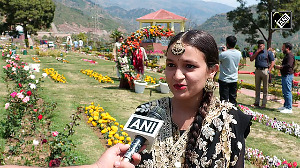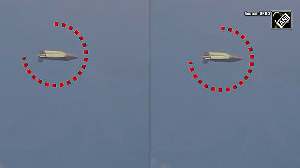At least 40% of a product must be manufactured in India for it to qualify for the Indian Designed, Developed and Manufactured category.

Almost fourteen months after becoming defence minister, and after missing numerous self-imposed deadlines, Manohar Parrikar on Monday announced the contours of the Defence Procurement Policy of 2016 (DPP-2016), which will guide military acquisitions after it is promulgated in another two months.
The policy will include imaginative and far-reaching changes, including a first-time emphasis on indigenous design, reduction of export content in weaponry, a boost to the "Make" programme in which the government subsidises equipment development and encouragement to small-scale industry.
Design, not just make
In future, vendors offering equipment designed and built in India - termed Indian Designed, Developed and Manufactured (IDDM) products - will be preferred to vendors offering equipment designed abroad.
The defence ministry is incentivising defence industry, so far focused on licensed manufacture, into the higher-tech realm of designing and developing Indian weaponry.
The current procurement policy, DPP-2013, explicitly promotes manufacture in India.
It gives top priority to the "Buy (Indian)" category; followed by "Buy and Make (Indian)" and "Make" categories, which mandate high levels of indigenisation.
Lower priority was given to "Buy (Global)" and "Buy and Make" categories, which allow a greater role to foreign production.
Yet, while these categories promoted Indian manufacture, giving top priority to the new IDDM category explicitly boosts Indian design and development.
"This category will be the most preferred acquisition category, above the existing 'Buy (Indian)' category", said a defence ministry statement.
Besides being designed and developed in India, at least 40 per cent of a product must be manufactured in India for it to qualify for the IDDM category.
"This changes everything. The impact will be far-reaching and will have cascading effect. This will change India from being a destination for low-cost manufacturing, to being a starting place for cutting-edge innovation", says Ashok Atluri, managing director of Zen Technologies, a leader in designing and building training simulators for the military.
"We welcome the move to introduce the IDDM category in the DPP as it will back companies like us who have proven competencies in indigenous design, development and manufacturing", says Puneet Kaura of Samtel Avionics.
On the other hand, other defence industry innovators highlight the difficulty of identifying where a product was designed.
"DPP-2013 clearly defined how India's manufacturing content would be measured. Now DPP-2016 must specify how it would be gauged whether a product is of indigenous design. Today a system could be designed in several countries; how would you calculate India's share? If not clarified, this could open up a Pandora's Box of misuse", says Rahul Chaudhry, head of Tata Power (Strategic Engineering Division).
In addition to indigenously designed kit, equipment containing 60 per cent or more of indigenous content will also make it to the highest procurement priority.
There are far-reaching changes in the "Make" procedure, which currently involves the government funding 80 per cent of the design and development cost of indigenous weapons platforms, with vendors paying 20 per cent.
In DPP-2015, the "Make" procedure will be expanded into three types.
In the first type, termed Make I, the government will fund 90 per cent of the development cost, instead of just 80 per cent.
Further, if after successfully developing a prototype, the vendor does not get an order within 24 months, his 10 per cent expenditure would be refunded.
This indirectly addresses an oft-expressed concern of the defence industry: the high cost of capital, which effectively raised its 20 per cent share to 40-45 per cent by the time the government reimbursed its expenditure.
Now, say industry leaders, their 10 per cent expenditure would rise to 20 per cent.
The second type, Make II, involves industry funding, rather than government funding, for prototype development.
If a tender is not issued within two years of the successful prototype development, the defence ministry would refund the entire development cost to the duly selected vendor.
The third type, Make III, seeks to galvanise innovation in micro, small and medium enterprises (MSMEs).
While procedurally similar to Make II (industry-funded Make), this is reserved for projects with a development cost of less than Rs 3 crore, which will be exclusively reserved for MSMEs.
For the first time, the army, navy and air force will each have dedicated "Project Management Units", headed by two-star general rank officers.
They will drive all Make projects relating to their respective services.
To participate in a Make contract, a firm must have a majority Indian stake and be controlled by resident Indians.
The company must be registered for at least five years; three years for MSMEs.
It must have a minimum rating of B++ from a recognised credit rating agency.
For projects worth Rs 5,000 crore (Rs 50 billion) or more, the participating company's net worth must be 5% of the development cost, subject to a maximum of Rs 1,000 crores (Rs 10 billion).
For projects worth under Rs 5,000 crore (Rs 50 billion), the eligibility criterion is a positive net worth.
Offset threshold raised to Rs 2,000 crore
In a surprise move, the offset threshold will be raised, with foreign vendors liable for offsets only in contracts worth over Rs 2,000 crore (Rs 20 billion).
Earlier, foreign vendors were liable for offsets in all contracts worth Rs 300 crore; the policy required them to plough back at least 30 per cent of the contract value into the Indian defence sector.
Private industry chiefs are slamming this "inexplicable move" that they believe would sharply reduce investment by foreign companies into India.
Off the record, they blame the defence ministry's inability to implement the offset policy since it was introduced in 2005-06.
Parrikar has complained that offsets raise the price of defence equipment by 20 per cent.
Another proposed DPP change will encourage vendors of commercial equipment - such as jeeps or trucks - to participate in tenders without incurring large expenses on costly modifications, which would be money wasted if their product is not chosen.
For example, a tender could involve a specialised communications truck, which requires radio racks and antenna fitted onto commercial trucks. The ministry would specify two sets of essential parameters.
"Essential Parameters A" would evaluate only the automotive performance of vehicles fielded by truck vendors, without requiring them to make costly radio modifications. Thereafter, only selected vehicles would be tested for "Essential Parameters B".
"This (will increase the) vendor base by allowing participation of vendors who will make changes to existing product specifications, only on receipt of assured orders", says the ministry release.
In another progressive change, Parrikar announced that the lowest qualifying bidder would no longer win a defence contract automatically, if another bidder were offering an obviously superior product at a marginally higher cost.
The ministry says: "(Tenders) will also contain Enhanced Performance Parameters, to provision for additional capabilities over and above the essential parameters [which are determined by the military]; vendors meeting the same will be provided additional credit score while evaluating their product cost."
DPP-2015 also seeks to overcome that defence procurement bugbear - "single vendor situations" - which often stall acquisition programmes because the vendor is perceived as enjoying too much leverage in the absence of competition.
Now the defence ministry says: "Single vendor cases… will be processed, with due justification."
In fact, previous DPPs provide for continuing with single vendor acquisitions, with due justification noted on file.
However, bureaucrats have tended to scuttle such procurements for fear of awkward questions later.

.jpg)










 © 2025
© 2025